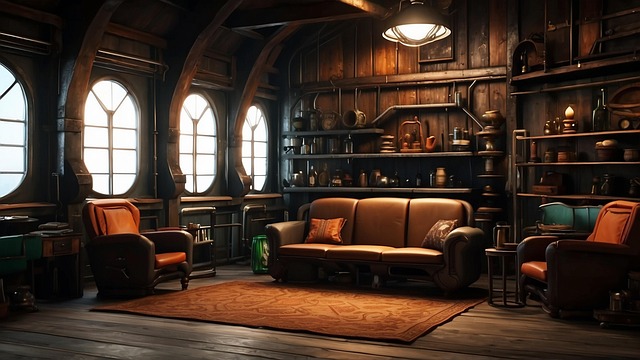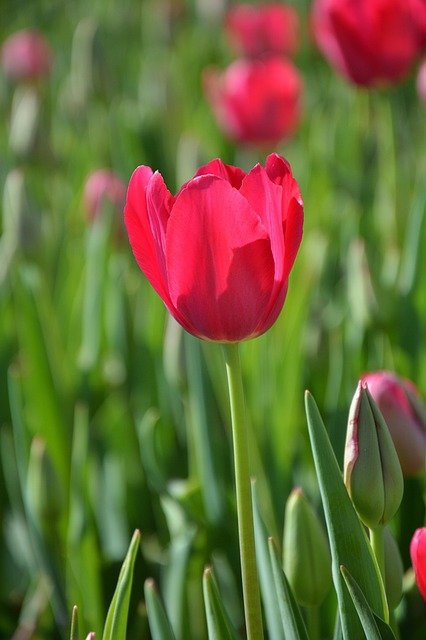Designing inviting backyard lounging spaces involves carefully blending textures for aesthetic appeal and comfort. Combine natural materials like wood, rattan, and bamboo with metal or concrete for a rustic-modern contrast. Use soft cushions, rugs, and textured stones to add depth and dimension, creating a captivating, relaxing outdoor retreat. Balance colors, patterns, and scales for visual harmony while incorporating diverse textures for tactile pleasure.
“Unleash your creativity and transform your backyard into a visually stunning oasis with a focus on texture. This guide explores the art of combining textures for an outdoor retreat that captivates the senses. From choosing complementary materials that align with your style to practical tips on maintenance, we delve into the secrets behind harmonious design. Discover how rough and smooth, natural and man-made textures can enhance your patio, deck, lawn, and poolside spaces, creating inviting backyard lounging areas that are both comfortable and aesthetically pleasing.”
- Choosing Textures That Complement Your Outdoor Style
- – Discussing different texture categories: natural vs. man-made, rough vs. smooth, light vs. heavy
- – Tips on color coordination and pattern mixing for a harmonious look
- Incorporating Textures Into Key Lounging Areas
Choosing Textures That Complement Your Outdoor Style

When designing your outdoor retreat, paying attention to textures is key to creating a visually appealing and inviting space for backyard lounging. Start by identifying your preferred aesthetic—whether it’s rustic, modern, or something in between—and choose textures that align with this style. For example, natural materials like woven rattan, bamboo, and wood add warmth and a sense of connection with nature, while sleek metal and clean-lined concrete evoke a more contemporary feel.
Consider the contrast and combination of different textures to create visual interest. Soft, plush fabrics like outdoor-friendly cushions and rugs can provide comfort in backyard lounging spaces, contrasting against the rougher tactile qualities of natural stone or brick. This interplay of textures not only enhances the aesthetics but also adds depth and dimension, making your outdoor retreat a captivating and inviting place to relax and unwind.
– Discussing different texture categories: natural vs. man-made, rough vs. smooth, light vs. heavy

When designing your outdoor retreat, textures play a vital role in creating a visually appealing and inviting space for backyard lounging. A great way to enhance the ambiance is by combining different texture categories, adding depth and interest. Start with natural textures like wood, stone, or rattan, which bring an organic feel and a connection to the outdoors. These materials are not only aesthetically pleasing but also provide comfort and warmth. For instance, a wooden deck or a stone patio instantly creates a cozy atmosphere for outdoor gatherings.
In contrast, man-made textures offer a wide range of options for customization and durability. Rough surfaces like concrete or coarse fabrics can add texture without compromising maintenance. Alternatively, smooth surfaces such as glass or polished metal reflect light, creating a cooler ambiance. Balancing light and heavy textures is key; combining them strategically ensures your backyard lounging spaces feel both inviting and unique. This blend allows for a dynamic environment where every corner captivates the senses.
– Tips on color coordination and pattern mixing for a harmonious look

Creating a visually appealing outdoor retreat means paying attention to details like color coordination and pattern mixing, especially in designing inviting backyard lounging spaces. Start by selecting a neutral base color, such as earthy tones or calming greys, which act as a serene backdrop. Then, introduce contrasting colors through vibrant accents or bold patterns for visual interest without creating chaos. For instance, pair a subtle stripe fabric with a solid-colored cushion to add depth and texture.
Mixing patterns should be done thoughtfully to avoid clashing. Choose complementary patterns—like geometric designs and floral prints—that share at least one common color. This subtle connection keeps the eye engaged while maintaining harmony in your backyard lounging spaces. Don’t be afraid to experiment with different scales, too; a large-scale pattern can be balanced by smaller accents, creating a dynamic yet cohesive look that invites relaxation and enjoyment.
Incorporating Textures Into Key Lounging Areas

When designing your outdoor retreat, paying attention to textures in key lounging areas is essential for creating a visually appealing and inviting space. Incorporating different materials such as woven rugs, plush cushions, and natural fibers like jute or bamboo adds depth and dimension to your backyard lounging spaces. This blend of textures not only enhances the overall aesthetics but also provides a comfortable and cozy atmosphere.
For instance, a soft woolen throw over a wicker couch can create a warm and inviting corner for relaxation. Alternatively, adding a smooth stone bench alongside a rough wooden table brings a unique contrast that captivates the senses. By carefully integrating these diverse textures throughout your outdoor rooms, you can transform your backyard into an idyllic retreat where both visual appeal and tactile pleasure converge, making it the perfect place to unwind and rejuvenate.
By thoughtfully combining textures in your backyard lounging spaces, you can create an outdoor retreat that’s both inviting and visually stunning. Whether natural or man-made, rough or smooth, light or heavy, the key is to mix and match while keeping color coordination and pattern mixing in balance. With these simple tips, you’ll transform your outdoor area into a serene sanctuary where comfort meets style.
